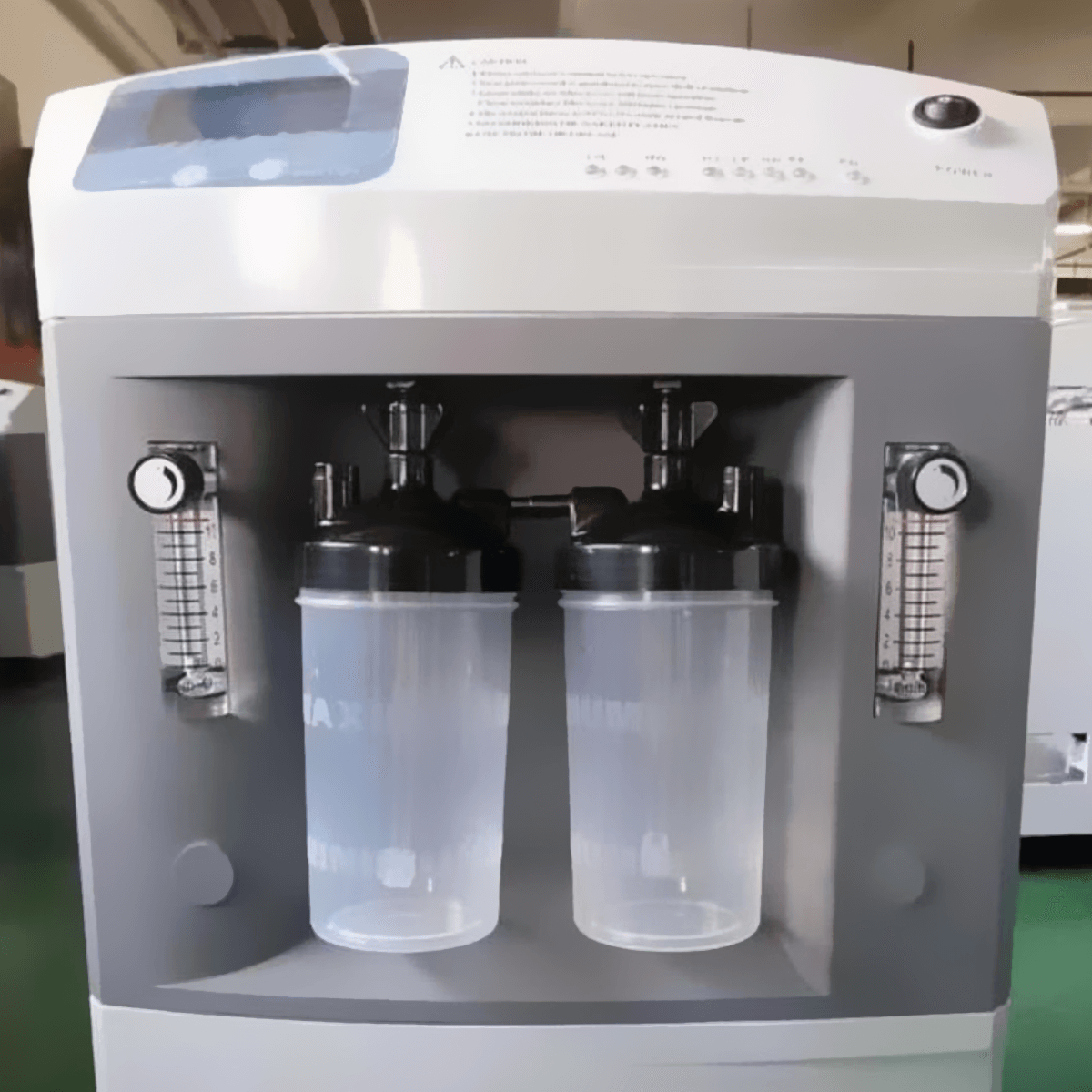NEW SOLUTIONS IN SUPPORT OF GLOBAL EFFORTS TO COMBAT COVID-19
At the peak of global distress, humanity came together, pooling resources to help one another: country to country, business to business, neighbour to neighbour. The Honoris network and its partners responded to the calls from governments and healthcare professionals in identifying new solutions for the fight against COVID-19. Through the network’s R&D capacities, Honoris institutions were able to provide the following innovations.
MOROCCO
Three healthcare innovations from École Marocaine des Sciences de l’Ingénieur (EMSI) have been selected in the pan-African hackathon, Marocovid 19, which brought students, start-ups, entrepreneurs, professors and engineers together to help in the fight against COVID-19. These three innovative projects are detailed below.
EMSI: African Saviour by Abdelali Agouzoul, 4th Year Student in Ingénierie Automatismes et Informatique Industrielle
'African Saviour' uses drones to deploy nasal swabs and other coronavirus diagnostic kit to medics across remote rural areas. The diagnostic pack carried by the drone will include a hydroalcoholic gel and gloves, both of which are single use. When the drone returns, it will only have to carry the sample, which will be in a sterilised bag, and the drone will have to go through a disinfection point as soon as it returns.
The inspiration for this idea was through the knowledge that the spread of Covid-19 is through direct contact between humans; therefore, if drones are the means of screening, it would safely and effectively eliminate the need for such contact.
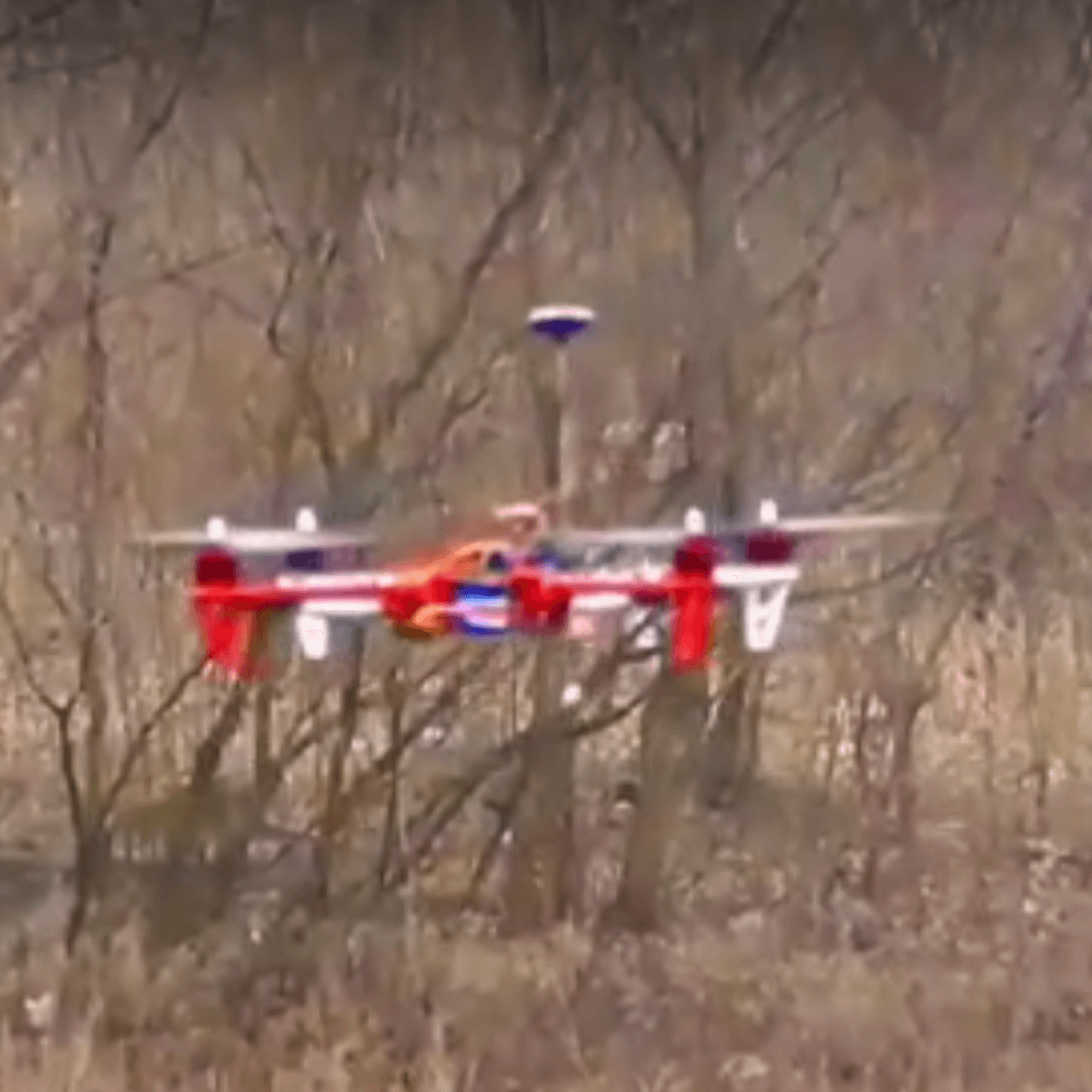
EMSI: Moroccan Electronic Prescription (MeP) by Mariam Chehmat, Laureate of the EMSI promotion 2019
The ‘Moroccan Electronic Prescription (MeP)’mobile application is a shareable platform that will allow a doctor to create prescriptions that will be visible to the pharmacy. MeP digitises the prescription and sends it to a pharmacy, where a patient, who is identified by a QR code, can collect the drugs. It is an ideal system for pandemics and critical situations. MeP also ensures the security of medical data and the traceability and digital historization of prescriptions for patient follow-up. This smartphone platform allows a doctor to create and validate prescriptions that a patient can then collect from the pharmacy using a unique QR code. This reduces doctor–patient contact, potentially saving the lives of much-needed medics on the front line.
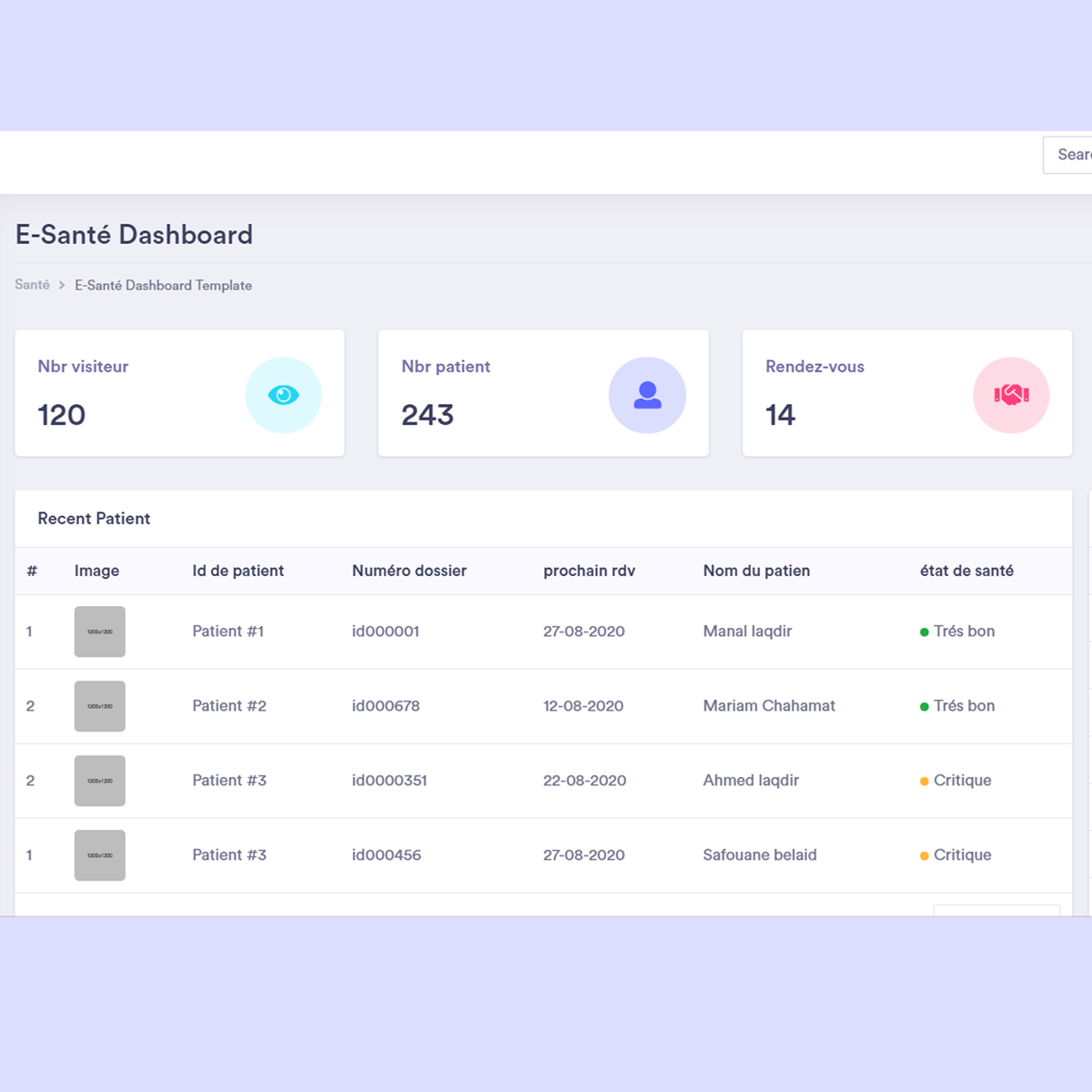
SOUTH AFRICA
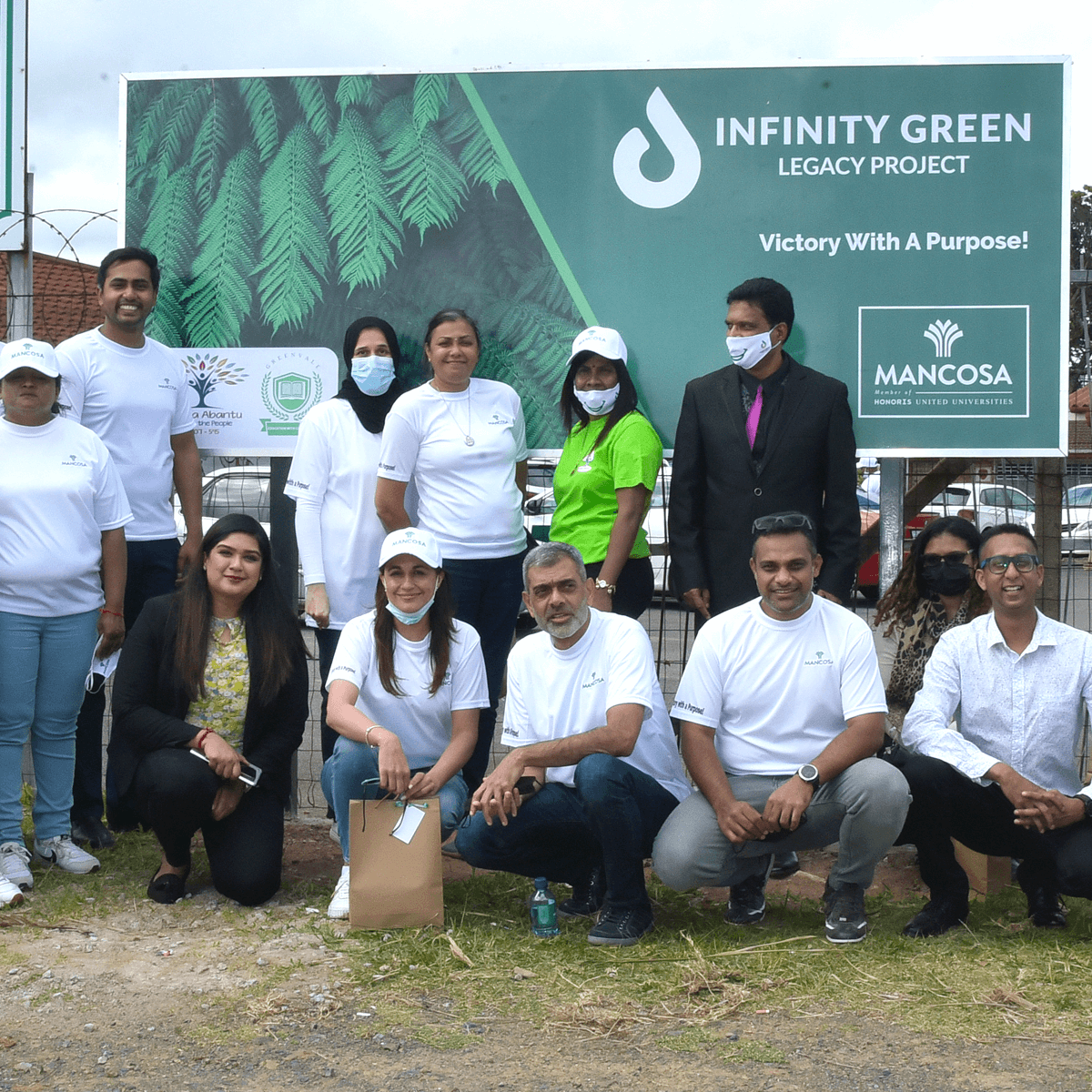
MANCOSA: Infinity Green Project
When South Africa went into lockdown in March 2020, it raised immediate concern for the many vulnerable and under-privileged communities which were already facing hardships. These troubling times saw the birth of many initiatives, outreach programs, and contests which aimed to strengthen social safety nets, uplift community spirit, and provide much needed support and assistance to communities in need. One such initiative during this time was The Virtual Design Thinking Challenge: a unique opportunity for bright minds to discuss and engage current and urgent challenges. This was a contest hosted by Impact Week, a non-profit program that promotes innovation and entrepreneurship skills. >>read more
REGENT Business School: Prototype intubation box
An intubation box is a protective shield that covers a patient’s head and shoulders while they are intubated by healthcare professionals. The aim of it is to reduce the medical professional’s risk of exposure to the virus during aerosolised procedures.
The RBS iLeadLABs have consulted with medical experts on the design, which has been through multiple iterations. The material used is a polyester substance which is more flexible than Perspex and is easier to cut, which means large quantities of them can easily be made. >>read more
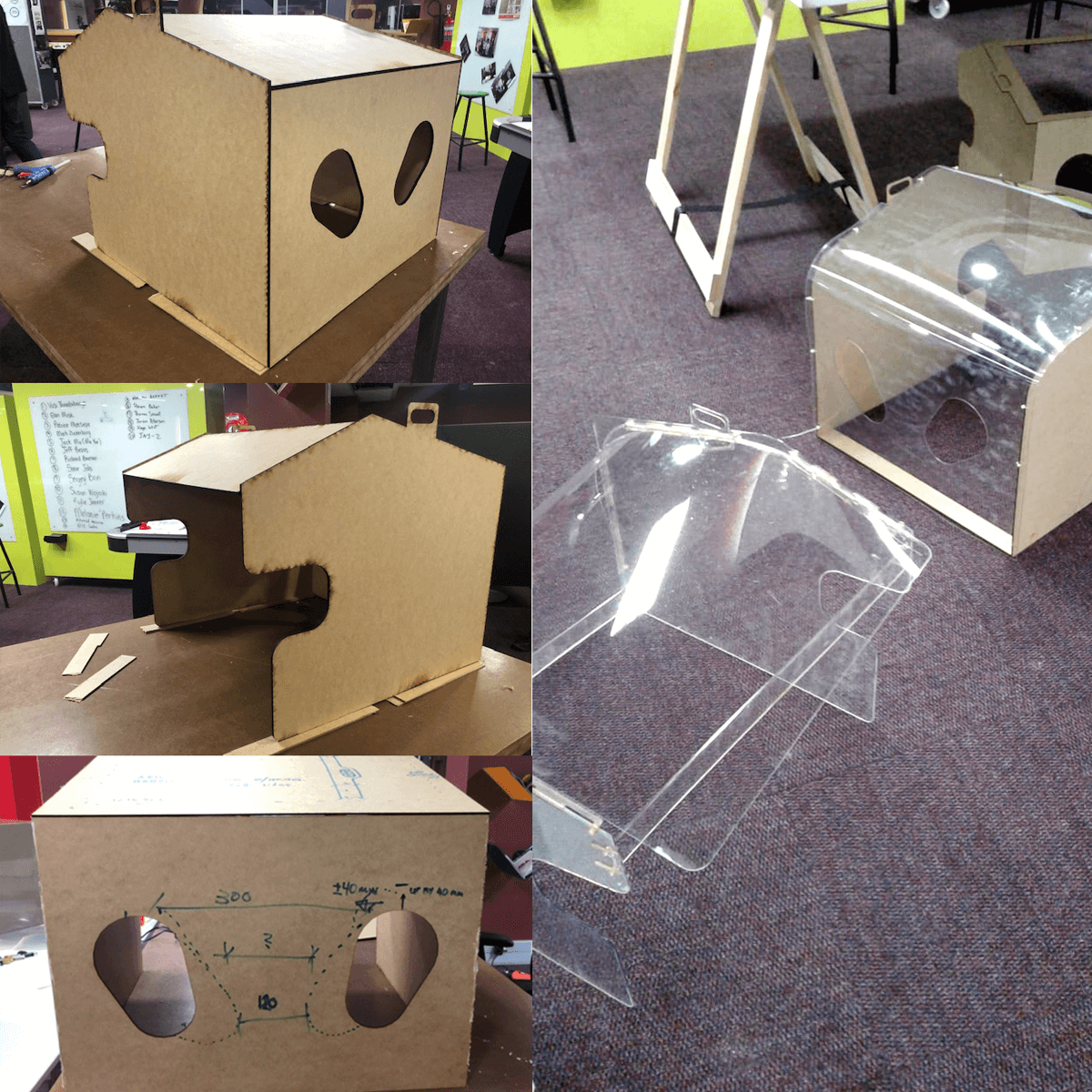
TUNISIA
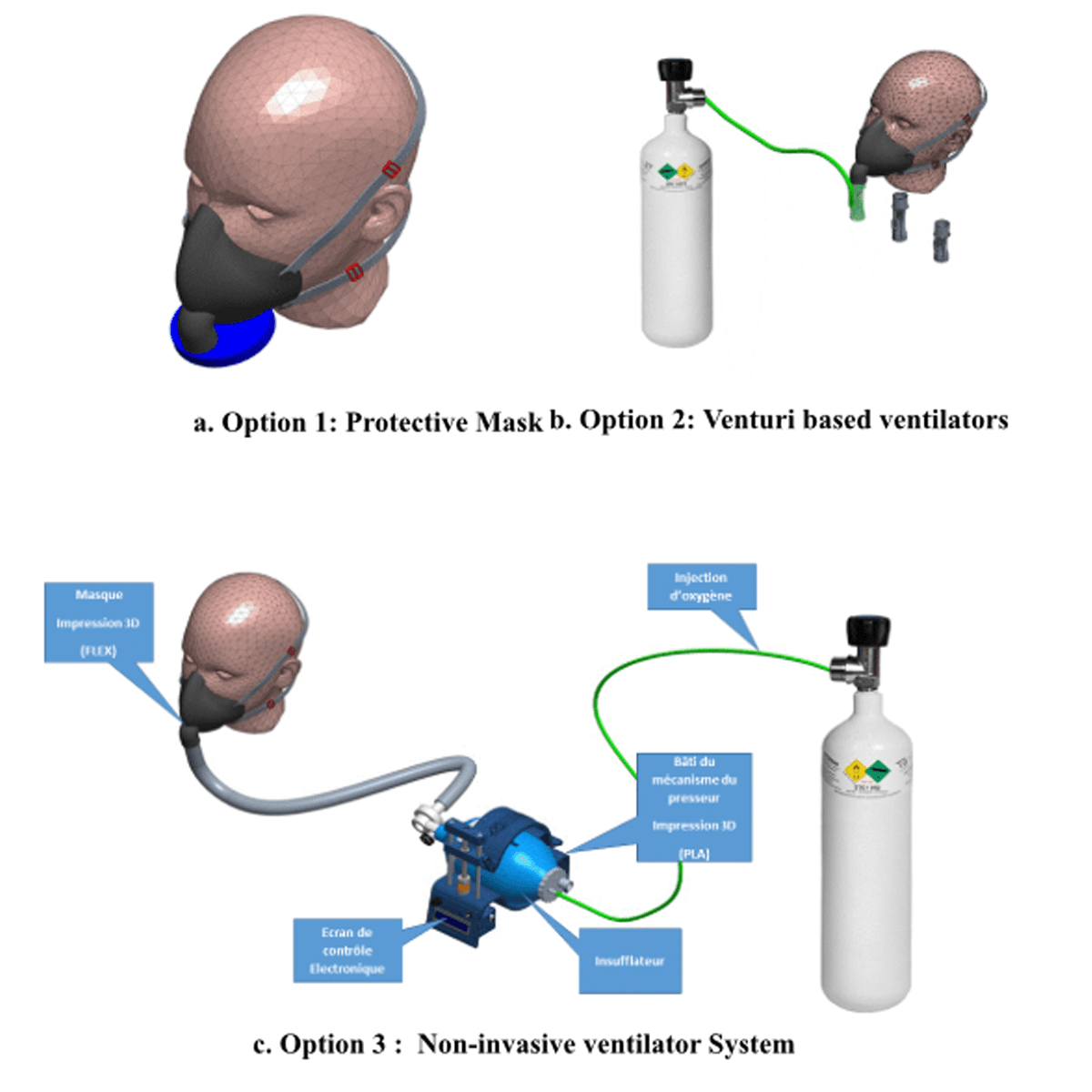
UNIVERSITÉ CENTRALE: Non-invasive and affordable 3D-printed respirator
Chadli Dziri, MD, Director of Honoris Medical Simulation Center, and his colleague, Professor Mamoun Ben Cheikh (an anaesthesiologist), assisted the team led by Professor Nidhal Rezg, Dean of UNIVERSITÉ CENTRALE Polytech, to produce a prototype for a non-invasive ventilation system.
The non-invasive kit includes a protective facemask, 3D-printed, that connects to an electric insufflator – the body of which can also be 3D-printed. Attached to the insufflator is an oxygen tank that delivers a predetermined, fixed concentration of oxygen. >>read more
UNIVERSITÉ CENTRALE: R3DVNI Device – Non-invasive ventilation system
The invention relates to a compact respirator, which allows air to be propelled under pressure into the airway of a person in respiratory distress. This respirator is suitable for use in hospitals or in private homes. It can also be used outdoors, for example by firefighters, emergency services, military personnel, or anyone else trained in first aid.
This ventilator is used for mask ventilation, also known as non-invasive ventilation (NIV) in the management of acute respiratory failure. This is an alternative to intubation or tracheotomy. It is also used in the treatment of sleep apnoea, as a continuous positive airway pressure (CPAP) medical device.
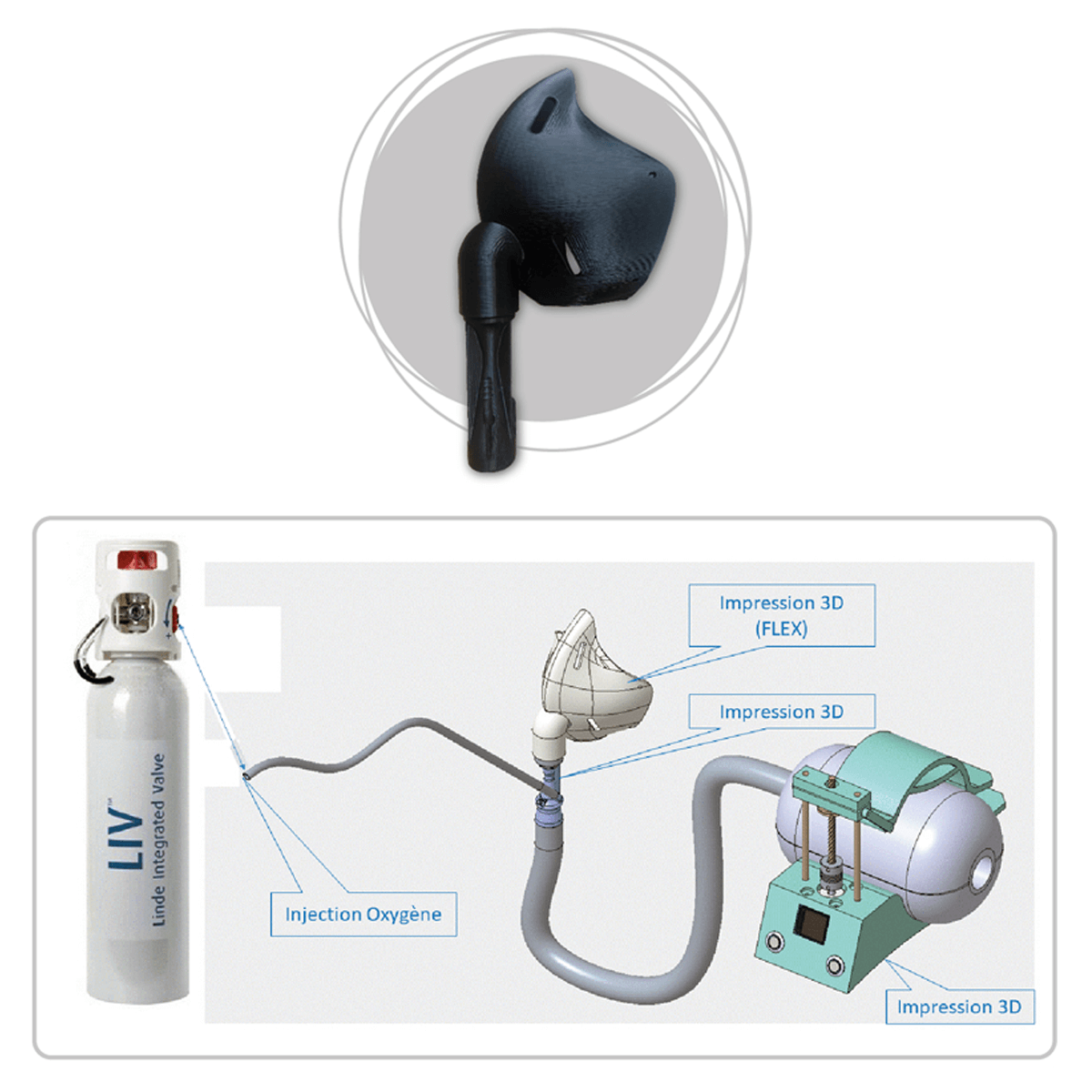
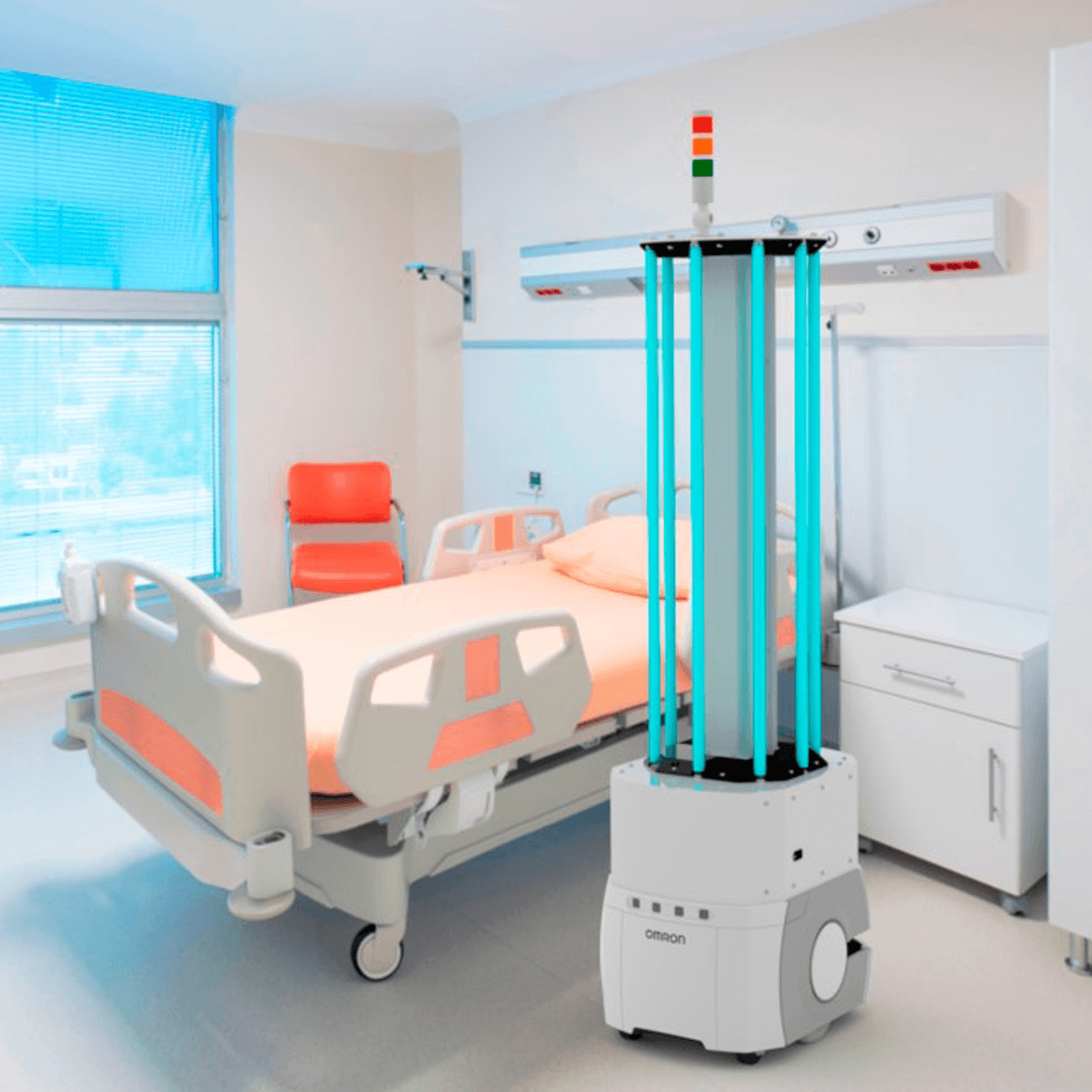
UNIVERSITÉ CENTRALE: DMAS Device - A device for air and surface disinfection
The disinfection of air and surfaces is based on the diffusion of a short-wave ultraviolet (UVC) radiant energy source which modifies the DNA of COVID-19 to prevent it from multiplying. The device developed will provide autonomous disinfection using a mobile robot. The device works by scanning an environment with special sensors and creates a digital map of the premises to be disinfected. The robot is able to specify the rooms to be treated, after which a disinfection path is calculated. The device does this via a disinfection circuit optimisation module which uses Artificial Intelligence methods. A room can take between 10 and 15 minutes to be disinfected - in a completely autonomous way.
UNIVERSITÉ CENTRALE: Viventis oxygen concentrator
The oxygen concentrator is a device that delivers oxygen continuously and reliably, which makes it a powerful ally in the fight against COVID-19. Its design is easily accessible and manufacturable. Making use of a process called reversible pressure adsorption, the device produces a gas mixture that can be enriched with up to 95.5% oxygen. Atmospheric air is drawn through a series of filters before passing through a compressor.
The pressurised air is passed over molecular sieves made of zeolite, a natural mineral substance that preferentially captures nitrogen (N2) from pressurized air (adsorption phenomenon).
